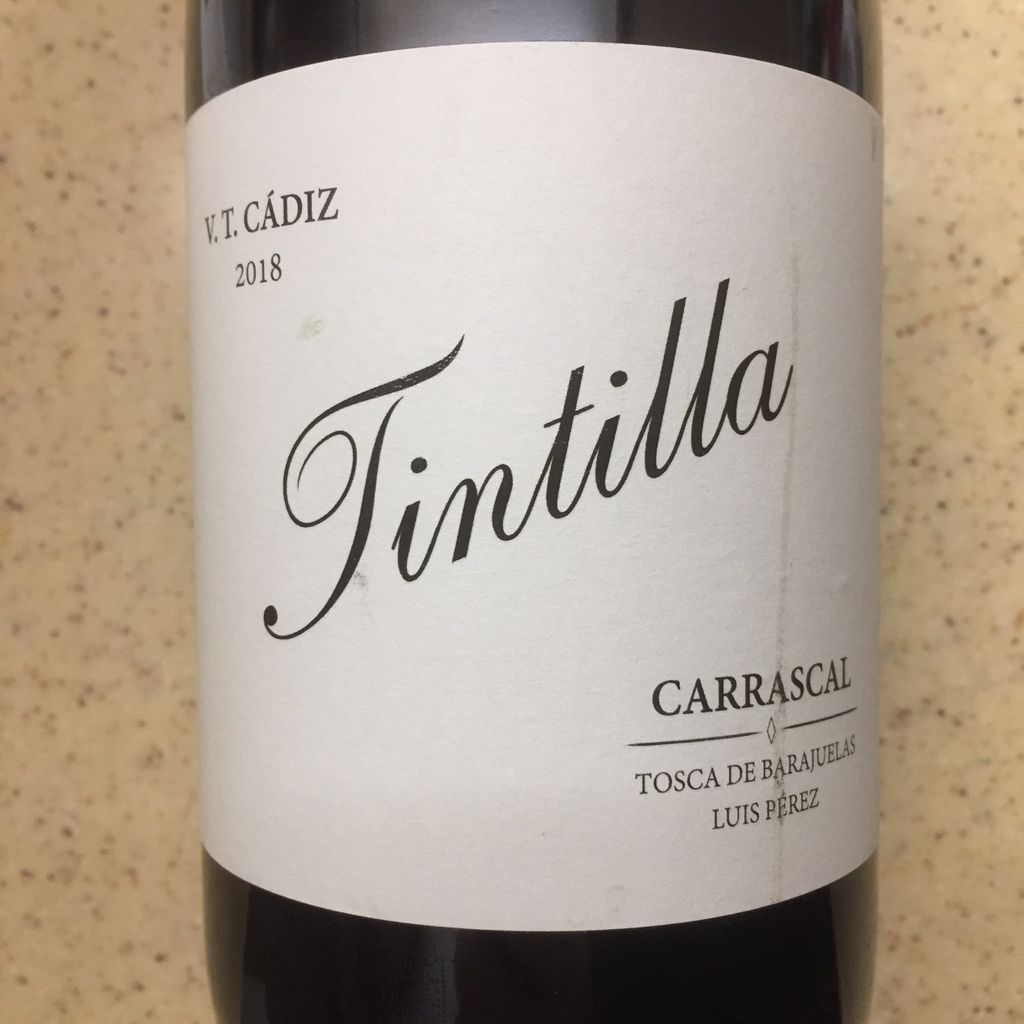
External search
Google (images)
Wine Advocate
Wine Spectator
Burghound
Wine-Searcher
Vintages
2020
2018
From this producer
Show all wines
All tasting notes
|
| Drinking Windows and Values |
| Drinking window: Drink between 2020 and 2026 (based on 1 user opinion) |
| Community Tasting History |
| Community Tasting Notes (average 89.5 pts. and median of 89 pts. in 2 notes) - hiding notes with no text | | | Tasted by pcwoz on 6/25/2022 & rated 92 points: Deep ruby-purple. Woody - cedar. Liquorice. Dark cherry and plum. Super interesting nose. On the palate it is full bodied and the notes carry through. Very good length. Mouthwatering. Darker fruits, but savoury more than overtly fruity. Good tannin structure and freshness.
91-92 (170 views) | | | Tasted by Praxis on 10/1/2020 & rated 87 points: Blackish reddish purple with a watery rim. The nose is pretty much dominated by greenish brambly and herbaceous qualities which seems to overpower the fruit and a touch of wet earth with some rubber tire notes. After an hour of aeration, a meaty animal funkiness emerged. The palate is medium-bodied, relatively well-balanced, quite fresh, with a slight savory finish. The flavor components of this Andalusian red made from their native Tintilla de Rota variety (a.k.a. Graciano in Rioja) is quite similar to the nose mentioned earlier. Lots of herb-inflected brambly fruits, slight menthol and green tobacco, raw, meat and finishes with a good amount of delightful earthy minerals, old rubber tires. This is a pleasant drinker and somewhat different from my usual varieties. It sort of reminds me of some of the Spanish wines from the Tarragona, Catalunya region that I have tried in the past. This is one of the three single vineyard expressions of the indigenous Tintilla de Rota grape made by the producer. This is one from Carrascal while the other two are from Balbaina and Corchuelo located in and around the VT Cadiz appellation. Much better on the first night; by the second evening, the fruit started to show and the greenish herbaceous qualities disappeared. However, the alcohol became so overbearing then everything started to fall apart. (1258 views) |
| By Josh Raynolds
Vinous, Mediterranean Spain: Where to Start? (Mar 2021) (3/1/2021)
(Bodegas Luis Pérez Tintilla Carrascal Red) Subscribe to see review text. |
NOTE: Scores and reviews are the property of Vinous. (manage subscription channels) |
| Pago Carrascal On weinlagen-infoSpain Vinos de España - Wines of Spain (Instituto Español de Comercio Exterior) | Wikipedia
Wine Map on weinlagen-info
Spain is the third largest wine producing nation in the world, occupying the majority of the Iberian Peninsula with vast diversity in climate, culture, and of course, wine. From inky, dark reds of the [Priorat] to dry, white Finos from Andalusia, Spain can easily boast of elaborating a wide variety of notable styles. Within Spain there are currently 62 demarcated wine regions, of which a handful have gained international recognition: [Rioja], Priorat and [Ribera del Duero]. Yet these regions are only a small sample of the high quality wines Spain produces. Regions such as Cava, Penedes, Somontano, Galicia, Rueda and Jerez are only a few of the numerous regions worthy of exploration throughout Spain. Spain can also lay claim to having the most land under vine in the world, growing up to, by some accounts, 600 indigenous varietals of which Tempranillo is their most well known. Other popular varietals include [Garnacha], Bobal and Monastrell for reds and for whites; the infamous [sic] Palomino Fino grape which is used in the production of sherry wine, Pedro Ximenez in Montilla Morilles, Albarino used in the creation of the bright, effervescent wines of Galicia, and Verdejo in Rueda. - Source: - Catavino.net
Spain is not in the forefront of winemaking for its dessert wines, other than for its sweet wines from Sherry country including the highly revered Olorosos (when sweetened). But apart from Sherry Spain has a range of styles of dessert wines, ranging from the those made from the Pedro Ximenez grape primarily in Jerez and Montilla-Moriles) to luscious, red dessert wines made in the Mediterranean from the Garnacha (Grenache) grape. Some good Moscatels are made in Mallorca, Alicante and Navarre. The northwest corner of Spain, Galicia, with its bitter Atlantic climate, is even making dessert wines, called “Tostadillos” in the village of Ribadivia (similar to France’s “Vin de Paille”). The Canary Islands have made interesting dessert wines for centuries (they are mentioned by Shakespeare, for example) and in recent years the quality of winemaking has been improved and the Canary Islands wines are being better marketed now. The winemaking styles for “Vinos Dulces” are also diverse, from “Late Harvest” (Vendimia Tardía) to “Fortified Wines” (Fermentación Parcial). Based on in-spain.info.Andalucía Andalucía and its wines
DOs
Wikipedia
Map on weinlagen-info
Two suggestions for listing Sherries and Manzanilla wines from a frequent user in a time of change:
The vast majority of these wines are solera-produced and are therefore nonvintage; they should not be listed under a vintage date. A Saca (or bottling) can be listed with a date under Designation, since each bottling is liable to be somewhat different. Dates of accession to your cellar, if it seems important, can also be listed in Designation. <b> Only an Anada (Vintage) wine should bear a vintage date.</b>
Currently, Manzanilla wines (what used to be called Manzanilla Fino) need only be listed as coming from the wine region Manzanilla-Sanlucar de Barrameda. This assumes the 'Jerez' region, which need not be mentioned. For older wines, there may be some confusion about the origin and type. I would suggest following the label as much as possible. jht |
|




